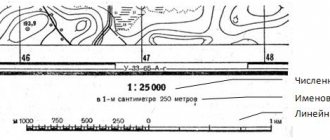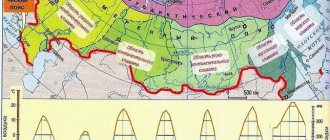One of the amazing and unusual creations of nature is Elbrus. This is a volcano located in the Caucasus. It is considered the highest point in Russia and is included in the list of the highest parts of the world. For some time now, people have been concerned about the question of whether the Elbrus volcano is active or extinct. This huge mountain is represented by two separate volcanoes with the highest point being 5,642 meters above sea level. Like all volcanoes, Elbrus consists of rocks and a bulk cone that was formed as a result of the eruption. The height of the pedestal is about 3.7 kilometers, and everything else is an increase. This mountain also has another name - Little Antarctica. It is associated with an ice cap that does not leave the top throughout the year. So far, scientists are arguing about which Elbrus volcano is active or extinct.
Tallest volcano
Where is the active or extinct Elbrus volcano located, when was it formed? These are not all the questions that concern people. To begin with, it is worth noting that this formation is considered the highest point in Europe and Russia. Since there is no clear division between the boundaries of Asia and Europe, this formation can safely be attributed to both Europe and Asia. The height of the mountain at its highest point is 5,642 kilometers.
Elbrus is part of the Caucasus Mountains, although it was formed somewhat differently. The mountains themselves appeared about five million years ago, but the volcano appeared later due to complex and long-term geological processes. First the peak appeared, then a second cone began to form on the eastern side of the side crater.
It is not difficult to determine exactly whether the Elbrus volcano is active or extinct. Although some scientists still included it in the list of extinct ones, this is not entirely correct.
Sights of the area
Elbrus is a mountain (the photo shows that the territories surrounded by it are mountainous areas, the attractions of which are directly related to
Elbrus, which includes the following places of interest to tourists:
| Location | Sight |
| Tereskol | A village in the Elbrus region, whose population is distinguished by its ethnic color and hospitality |
| Baksan Gorge | More than 200 thousand tourists visit it annually |
| Mount Cheget | An active tourism center in the summer and a ski resort in winter (altitude 3769 m above sea level) |
| Baksan River | Forms the freshwater basin of the Terek |
| Cafe Ai | A catering establishment located at the foot of the mountain |
| Cable car | Capable of transporting 750 people simultaneously |
| Seven | A glacier on the mountain slope of Elbrus, which got its name due to its similarity with this figure |
| Narzanov | A picturesque valley that consists of a mountain river and alpine meadows |
At the foot of Elbrus you can see the monument to the first pioneers and conquerors of the mountain peak. Some tourists note that monumental sculptures inspire them and add vitality and self-confidence.
The beauty of Elbrus
The beauty of the mountain leaves no one indifferent; even in the photo it looks graceful. The extinct volcano Elbrus is famous for its diversity of nature: beautiful mountain meadows, coniferous forests, unusual flora and fauna, turbulent rivers. Not long ago, the Elbrus region national park was created, because of which hunting and deforestation are prohibited in this place, and construction is also prohibited.
The foot of the mountain is famous for its huge number of gorges, among which is Dzhyly-Su with mineral springs and waterfalls up to forty meters high. Among them, it is worth highlighting the Sultan waterfall, located on the Malka River.
On the slope of the mountain, at an altitude of about three kilometers, is the ice lake Jikaugenkez. In its middle part rises Kalitsky Peak, about three and a half kilometers high. Religious sanctuaries made of huge stones were once created here.
What Elbrus looks like
The nature here is diverse: mountain meadows, rare plants and animals, coniferous forests, turbulent rivers leave no one indifferent, and some time ago the Elbrus National Park was created in the area of the volcano, and therefore there is no hunting, no cutting down of forests, no construction here it is forbidden.
At the foot of Elbrus there is a huge number of extremely beautiful gorges, and on the northern side there is the famous Dzhyly-Su tract with mineral thermal springs and beautiful waterfalls from 20 to 40 meters high, among which the Sultan waterfall located in the upper reaches of the Malki River stands out.
Mount Kilimanjaro791340
On the slope of the mountain, at an altitude of about three hundred meters, there is a huge ice lake, Jikaugenköz. In its middle part rises the Kalitsky Peak, reminiscent of a medieval castle, whose height exceeds 3.5 km, where there is a site with religious sanctuaries, which were created from large stones.
The volcano itself looks like this:
- Elbrus has two peaks, each of which represents two independent volcanoes, connected by a saddle, the height of which is 5.3 km. The distance between the peaks is about three kilometers;
- The eastern, younger cone is slightly lower than the western one, and its height is 5621 m. It has a clearly defined crater with a diameter of 200 meters and a depth of about 80 m;
- The height of the western peak of the almost extinct volcano is 5642 meters, the diameter of the crater is 600 meters, the depth is 300 m, and the upper part of the volcano is partially destroyed;
- The slopes of the mountain are mostly gentle, but closer to the top, starting at 4 thousand km, the angle of inclination increases to 35 degrees;
- On the northern and western side of Elbrus there is a huge number of sheer cliffs about 700 meters high;
- Starting from a height of 3.5 km, the volcano is covered with rocks and glaciers; in total, there are about 70 glaciers on Elbrus, the area of which exceeds 130 km². The water flowing from the glaciers of Elbrus creates three main streams that feed the main rivers of this region - Baksan, Kuban and Malka;
- The surface of the volcano, free of glaciers, is covered with loose rocks;
- Snow cover remains on the top of Elbrus throughout the whole year.
On the northern slope of the mountain, at an altitude of about 3 km, there is a Birjal lava tract with a huge number of remains of melted sand, which, under the influence of precipitation, weathering, and soil erosion, collapsed and created numerous piles of bizarre shapes, forming grottoes and caves. They hang over each other, forming bridges, arches, consoles and, diverging in different directions, taking on various bizarre shapes.
Appearance of the volcano
What kind of volcano is Elbrus, what does it look like? This unique natural creation looks like this:
- The mountain has two peaks, each of which is a volcano. They are connected by a saddle about 5.3 kilometers high. The distance between the peaks is three kilometers.
- On the eastern side of the mountain there is a young cone. It is lower than the western one - its height is 5.621 km. This cone has a clear crater, which is two hundred meters in diameter and about eighty meters deep.
- The western volcano is twenty-one meters higher than the eastern one. This formation has a huge crater - about six hundred meters. The depth of the crater is three hundred meters. The upper part is partially destroyed.
- The slopes of the mountain are mostly flat, but from four thousand meters above sea level the angle increases to thirty-five degrees.
On the northern side there are a large number of steep rocks. The height of some of them reaches a kilometer.
Description and features of the mountain
The total altitude is 5,642 km above sea level, the relative altitude is slightly lower - 4,741 km. The height was first determined by academician V.K. Vishnevsky in 1918. According to the scientist, this figure was 5,421 m.
The origin of the mountain range is volcanic type, the diameter of the base is 15 km. The last time the volcano erupted was a long time ago—about 5,120 years ago. Elbrus has two distinct peaks: Western and Eastern. Both are divided by a flat, extended saddle 5,416 m high. The distance between the peaks is 1500 m, the absolute height of the base is 3200–3800 m, the steepness of the slopes is 35–40 degrees.
Mount Elbrus - the gray peak of the Caucasus
On the slopes of the peak there are 32 glaciers that flow into the rivers, feeding them. The total area of glacial formations is 134 km2, length from 6 to 9 km. The largest of them:
- Terskol
- Small Azau
- Irik
- Big Azau
- Kükurtlyu
The area of glacial formations has decreased by 18% in the last century.
Volcano Glaciers
The extinct or active Elbrus volcano is covered with glaciers. Their area is more than a hundred square kilometers. All the water flowing from the seventy glaciers of the mountain is collected in three streams, which feed the local rivers - Malka, Kuban and Baksan. In the area where there is no ice, the surface is loose. At the top of the mountain there is snow that does not melt throughout the year.
On the northern side of Elbrus, at an altitude of three kilometers, there is Birjal, a lava tract with a large number of remains of melted sand. Under the influence of precipitation and soil erosion, grottoes and arches, bridges, and caves were formed. They diverge in different directions, creating the most unusual shapes.
Origin story
The origin of Elbrus differs from the origin of the Caucasus Mountains. The Caucasus ridge arose more than five million years ago. Its structure is folded. The volcano itself arose and formed much later - about one million years ago. Complex and long-term geological processes took place in the earth's crust. As a result, the western peak was initially formed, and then, near the side crater on the eastern side, the second peak began to form.
The height of the two peaks of the volcano
Elbrus is a relatively young volcano. The beginning of its life activity is 2.5 million years ago during the Neogene period. 800 years ago, rocks collapsed under their own weight.
The last major eruption occurred in 50 AD (about 120,000 years ago). A weaker eruption was observed approximately 900 years ago. The force of the eruption can be compared with the eruption of another modern volcano - Vesuvius. Ash of volcanic origin is found, to this day, at a considerable distance from Elbrus (Mount Mashuk, a distance of up to 90 kilometers).
In the history of the volcano, up to ten periods of emergence and erosion of the cone can be counted. The eruption sites changed their location all the time. The Khotyu-Tau-Azau rocks, located on the southwestern slopes, are the most ancient craters. And the modern, western and eastern peaks are the youngest of the existing ones.
Volcano action
Which Elbrus volcano is extinct or active, and is it active now? It is believed that during its entire existence the volcano was active only four times, and the age of the oldest volcanic rocks of this place is about three million years.
Over the long years of its existence, the Elbrus volcano last acted about two thousand years ago, and its greatest activity was 225 thousand years ago. These eruptions were not recorded anywhere, but scientists were able to find lava flows twenty kilometers long and about three hundred square meters of debris, which indicates strong emissions.
Officially, Elbrus is classified as an extinct volcano, although volcanologists do not agree with this. They record weak activity, which is why they talk about it as a dormant volcano. It emits chloride and sulfuric acid gases from the eastern side, and there are also hot springs known throughout the world: the temperature of “Hot Narzans” reaches sixty degrees. Based on the data available about the volcano, scientists came to the conclusion that active liquid magma is located at a depth of six kilometers from the surface of the earth.
ACTIVITY OF ELBRUS VOLCANO
Scientists have calculated that during the entire existence of Elbrus, it showed its volcanic activity only 4 times. The last time this happened was about 3 million years ago.
There were also minor signs of volcanic activity about 200 thousand years ago, after which the activity died down and during the entire observation of Elbrus it practically did not appear.
Despite the fact that the volcano has no signs of activity, volcanologists do not classify Elbrus as a dormant volcano; in their opinion, the term “dormant” is appropriate for it.
This is confirmed by the facts of internal and external activity of the volcano certified by scientists. It is manifested by the release of chloride and sulfuric acid gases, which mainly occurs on the eastern slope of Elbrus. In addition, the volcano has another characteristic sign that it has not finished its volcanic activity - these are thermal springs. For example, many people are familiar with the Elbrus spring “Hot Narzan”, from which water with a temperature of up to 60 degrees Celsius rises to the surface of the earth.
When he wakes up
Scientists have different opinions regarding the activation of Elbrus. Some believe that it will be activated already in this century, while others believe that no eruptions can be expected in the next three hundred years.
Scientists who talk about the possible activation of Elbrus in the coming years have found a colony of mosses on the western peak. The peculiarity of these plants is that they grow only on warm soil. After measurements, it turned out that the ground temperature was 21 degrees, while the ambient temperature was minus twenty degrees. Such indicators prove that magma flows inside, underground, and it is not very far from the surface of the earth.
History of Elbrus
The period of formation of the mountain includes 2 or 3 million years. The formation of the peak began during the Upper Pliocene. The activity of Elbrus as a volcano began and lasted throughout the Pleistocene era, ending only in the Holocene. Studies of lava flows, fragmented volcanic rocks discovered by man in the upper reaches of rivers, have shown that the total volcanic activity of Elbrus is 250,000 years. The geological evolution of the peak was developed by Professor N.V. Koronovsky and shows that in the structure of the volcano there are 6 strata of different ages, all of them are combined into 2 complexes:
- upper
- lower
According to the assumptions of some scientists, the volcanic activity of the mountain is increasing.
Some scientists familiar with extensive research in detail believe that the volcanic activity of the mountain is increasing. There is debate as to whether the volcano is dormant or has already died out. It is likely that the volcano will begin to erupt this century.
Exact location
Where is the Elbrus volcano located, in which country? This mountain is located in the Caucasus, on the border of Karachay-Cherkessia and Kabardino-Balkaria. The formation is located north of the main Caucasus ridge and is the highest point in Russia.
The coordinates of Elbrus volcano are as follows: 43°21′11″ N. w. 42°26′13″ E. d. This mountain is divided into two parts, the height of which is 5.642 and 5.421 km. Both volcanic formations stand at a distance of three kilometers from each other and are separated by a saddle of 5.2 km.
Elbrus for skiers
If there are slopes and snow, then there are ski resorts. The Elbrus region is no exception in this regard. The Azau and Cheget ski resorts are located in the Elbrus region of the Kabardino-Balkarian Republic, 186 km from Mineralnye Vody. The Azau ski area is suitable for both beginners and experienced skiers. "Cheget" is more suitable for advanced "users".
The skiing season in the Elbrus region lasts from October to May. The high season is from February to April. In spring, people not only ski on the slopes, but also sunbathe. Skating on the glaciers is possible all year round.
Photo: The ski season lasts from October to May
On the slopes of “Azau” there are 3 routes: “Polyana Azau – Krugozor” (length – 5100 m, difficult), “Krugozor – Mir” (5110 m, medium), “Mir – Gara-Bashi” (2000 m, easy). The stations are located at altitudes from 2350 to 3847 m. It is possible to go higher, but for this you will have to use a snowcat. The elevation difference on the slopes is from 347 to 650 m. The total length of the slopes is 12.2 km, and the total elevation difference is 1497 m. The width of the slopes is from 60 to 80 m. The artificial snowmaking system allows you to ski up to 180 days a year.
Photo: Snow cannons
The capacity of the lifts to the Mir station is 2400 people/hour, to Gara-Bashi – 1400 people/hour. From the Krugozor station you can clearly see the Baksan Valley. Above you will find a panorama of the Greater Caucasus Range. And from the maximum point - glaciers. The Gara-Bashi station “floats” above the clouds and is considered the highest in Europe. Lift operating hours are from 9:00 to 17:00. Get up until 16:00.
Photo: Chairlift
There are eight types of ski passes on sale - from a one-time lift to a six-day pass. Children under 6 years old have free entry to the ski lifts. On weekends, the cost of a ski pass increases by an average of 20%. In the period from 22.05 to 01.12, summer tariffs apply, providing only one-time descent and ascent. At this time, not skiers, but climbers climb the mountains.
“Cheget” has more difficult conditions for skiing. Local trails are more difficult than many European ones. In 1963, skiers went up for the first time on a chairlift. Now there are 15 tracks on Cheget. They are laid at altitudes from 2100 to 3050 m. Their total length reaches 20 km. There are luxurious conditions for snowboarders and freeriders. The easiest route is at the top of the slope.
Photo: Snowboarders
There are three lines of the cable car at Cheget. Single- and double-chair lifts operate from “Chegetskaya Polyana” to the “Cheget-2” station (2100-2750 m). You can get to the Cheget-3 station (2750-3000 m) by single-chair or drag lift. Up to the highest point (3070 m), only the rope tow operates. The resort offers two ski pass options - one-time and one-day. There are several hotels located on the Chegenskaya Polyana, in close proximity to the ski lifts.
The resorts have shops that sell everything you need for skiing and snowboarding. Equipment rental is available. Beginners can hire an instructor. Excursions are organized for tourists. The main attractions are the Narzan Valley, Chegem waterfalls, the Bezengi glacier, Blue Lake, the Maiden's Braids waterfall, and Elbrus National Park.
Photo: Mountain Waterfall
Currently, there are more than 70 accommodation places in the Elbrus region, including mountain camps, guest houses, boarding houses and hotels. Accommodation costs may vary greatly depending on the services provided. In addition to hotels, you can stay in the private sector in the villages of Terskol, Baidaevo, Tegenekli, Elbrus, Neutrino. The price of housing falls in proportion to the distance from the ski lifts.
Photo: There are more than 70 accommodation places in the Elbrus region
What was he like?
As a result of the rise of the Caucasus Range, a volcano arose. This was in the distant Neogene. According to scientists, its eruptions were similar to those of Vesuvius, only several times stronger. As a result of the eruptions, hot lava came out and solidified very quickly. And the higher the mountain became, the faster the lava flows cooled. Stones, ash and lava were layered on top of each other, increasing the height and width of the mountain.
There are several supervolcanoes in the world, among which is Elbrus, and only Yellowstone is larger than it. It is believed that because of him, over the past two and a half million years, planet Earth has completely changed its appearance.
It is difficult to imagine the force of the eruption: ash is still found 90 kilometers from the base of the mountain.
After the eruptions, it was time for calm. Rivers and glaciers destroyed the volcanic cone to its very foundation. Layers of volcanic rocks were overlain by river sediments. From the moment of the appearance of Elbrus to the present time, the cone has been eroded and revived several times.
Scientists have proven that throughout its history the volcano has changed its eruption point more than once. The most ancient crater is considered to be the southwest, a place called Khotyu-Tau-Azau. The two peaks that represent the volcano today are considered the youngest.
Flora and fauna
The flora and fauna of the mountain peak is concentrated at its base, which is called the Elbrus region. In order to preserve the flora and fauna of this part of the Caucasus region, a national park was created on September 22, 1986, the territory of which is protected by law.
This part of Elbrus, which is actually the beginning of a large mountain, is intended for the free development of local animal species, as well as the growth of trees, herbs and shrubs. Mountaineering, hiking and outdoor recreation are allowed here.
The fauna of the lowland part of Elbrus includes over 63 species of mammals, at least 112 species of birds, 11 species of reptiles (mostly reptiles), 8 species representing the amphibian family, 6 species of fish and countless varieties of insects, 15% of which have not yet been studied by science .
The most common wild animals and birds are the following types:
- marten;
- wild cat;
- brown bear;
- steppe ferret;
- partridge;
- mole rat;
- roe;
- hamster;
- otter;
- black grouse;
- Ular.
Thanks to human conservation activities in the Elbrus region, tur species have been preserved and multiplied. The population of these animals already numbers 4,600 individuals. The mountain rivers of Elbrus, which originate from melted glaciers, are inhabited by brook trout, which prefer exceptionally clean waters.
The flora of Elbrus is distinguished by a variety of flora and is represented by coniferous trees such as spruce, pine, and fir. At altitudes above 1500 m, alpine and subalpine meadows predominate. At lower altitudes, the flora of the mountain peak is formed by a mountain-type forest-steppe zone.
Occasionally there are small areas of shrubby woodland.
The following varieties of Elbrus flora are protected by the Red Book:
- all types of angiosperms;
- Radde birch;
- small chickpeas;
- columnar quarry;
- baksan wolf wolf;
- dolomite bell.
In spring, more than 3,000 wild herbs bloom in the subalpine and alpine meadows of Elbrus. Their numerical population exceeds 50% of the total number of field plants growing in the territory of Kabardino-Balkaria.
Weather on the mountain
Elbrus is of great interest not only to scientists, but also to climbers. Athletes from all over the world have tried to conquer the mountain more than once, but not everyone succeeded. During the off-season, the weather in this place is so harsh that not everyone returns home with a victory. Closer to the very top it is very cold, but you can live with it. But the strongest winds of this place can reach hundreds of kilometers per hour, which, combined with twenty-degree frost, is fatal.
The bravest can reach up to four thousand kilometers, but storms, snow and temperatures of minus thirty degrees with wind stop even the most experienced climbers.
The climate of Elbrus is changeable. This is due to the peculiarity of the mountain’s location: it is located at the meeting point of the Black Sea and Mediterranean cyclones with the Arctic ones. Because of such “dates,” the weather can instantly change from hot and summer to cold and winter. Severe cold can cover the mountain in just a few minutes. Air currents coming from the Black Sea side cause precipitation on the mountain, which falls in the form of snow. Moreover, at high altitudes it falls at both sub-zero and positive temperatures. Most precipitation falls in summer and winter. Based on this, the best time to climb the mountain is November, when the snow cover is dense and constant.
In conclusion, it is worth noting that Elbrus can wake up at any moment and those climbers and tourists who find themselves on the volcano will be unlucky.
Elbrus weather
Not everyone who starts climbing Elbrus will be able to conquer it, especially if he decides to do it in the off-season - in spring or autumn. Closer to the top, even well-prepared climbers can be stopped not only by the severe cold, but also by the terrifying strength of the wind, which knocks them down, gusts reaching 100 km/h.
The most stubborn can, despite the bad weather, reach a height of 4 thousand km, but such weather will stop anyone - snow, storm and temperature of minus thirty degrees; in these conditions, going up is extremely dangerous for life.
Since warm and humid Mediterranean and Black Sea cyclones meet cold Antarctic ones near Elbrus, the climate of Elbrus is extremely changeable: summer heat quickly gives way to bitter cold, and clouds in a few minutes can cover an entire mountain, hiding absolutely all landmarks - and the traveler will have to rely only on his instincts .
Moist air currents coming from the Black Sea cause numerous precipitation on Elbrus, mainly in the form of snow, which at high altitudes can fall at both sub-zero and positive temperatures. The most precipitation falls here in summer and winter, which is why the most favorable time for climbing is November, when a constant dense snow cover is established, and winter.
Eruption of the Klyuchevsky volcano79134.751
The most dangerous period for climbing the volcano is the spring or autumn months: the weather at this time is bad and unstable, and the temperature at the peaks even in May can drop to -50 degrees Celsius. So, several years ago, a group of twelve climbers attempted to climb the volcano at the end of spring. But due to a sharp deterioration in the weather and loss of visibility, the climbers got lost, and then completely froze to death - only one person was able to go down.
Volcanic eruption. When will Elbrus explode?
Once again mentioned on the RBC channel
Iceland's Eyjafjallajökull volcano , which has brazenly "disrupted flight schedules across Europe and caused concern among asthmatics."
I remembered about our Caucasian volcanoes Elbrus and Kazbek .
Scientists have differing opinions regarding the eruption of these supposedly dormant volcanoes. There are those who predict an eruption in the next 10 years, there are those who propose to wait 200 years, there are those who say that we will not wait.
Only time will judge them...
Below is one of the versions. Enjoy.
___________________________________________________________
When will Elbrus explode?
Author: Vitaly Golovachev, columnist for “Economic Security” Do not believe reputable encyclopedic dictionaries, including those published recently, which report that the two-headed handsome Elbrus is the top of an extinct volcano.
Elbrus
This is wrong. It turns out that it is not extinct at all, but, as serious research by leading Russian institutes and laboratories has shown, “a potentially active and very dangerous volcano.” Moreover, experts are recording more and more menacing signs that Elbrus, after 1800 years of sleepy calm, is beginning to wake up.
From Wikipedia
Elbrus is a double-peaked saddle-shaped cone of a volcano. The western peak has a height of 5642 m, the eastern one - 5621 m. They are separated by a saddle - 5300 m and are separated from each other by approximately 3000 m. The last eruption dates back to 50 AD. e. ± 50 years.
According to the mountaineering classification, Elbrus is rated as 2A snow-ice, the passage of both peaks is 2B. There are other, more difficult routes, for example Elbrus (W) along the NW edge 3A.
Kazbek in the rays of the rising sun
“And not only he, but also Kazbek is a potentially active volcano,” emphasized at the beginning of our conversation the famous glaciologist Lev DESINOV, head of the Earth Remote Sensing Laboratory of the Institute of Geography of the Russian Academy of Sciences. - It is very serious. The tragedy in the Karmadon Gorge, which occurred six and a half years ago, when more than 100 people died under the collapse of the Kolka glacier, may be a harbinger of larger-scale disasters to come. For some reason, this is not often discussed outside of narrow scientific discussions.
Maybe they don’t want to scare residents of settlements located in the Caucasus and in the foothills, as well as tourists? If so, then this is a wrong policy... Indeed, it is impossible to reduce everything to a purely scientific dispute between scientists. After all, if Desinov is right, then it is necessary to seriously reconsider the views on the economic development of a large and already not very calm region of Russia, to organize a large-scale and expensive study of natural anomalies, including space reconnaissance. All this is troublesome, the kind of problem that one just wants to put off until later, until better times. Therefore, in such cases, there is always a temptation for the authorities to routinely accuse scientists of escalating the situation and searching for “fried” facts. Meanwhile, the facts that Desinov and many of his colleagues cite in their conclusions are really fried, without any quotation marks.
Karmadon Gorge after the collapse of the Kolka glacier, 2002
Officials are suppressing the truth about the collapse of the Kolka glacier. The Remote Sensing Laboratory, headed by Desinov, annually receives more than 35 thousand photographs of the Earth taken from the International Space Station for detailed research. The head of this scientific unit is one of the largest experts on pulsating glaciers (these are those that either advance or retreat, with a particularly insidious disposition). It is no coincidence that the Ministry of Emergency Situations attracted Lev Vasilyevich as the main Moscow expert in investigating the causes of the tragedy in the Karmadon Gorge. But, alas, the scientist and the Emergency Situations Ministry staff could not find a common language.
The fact is that in September 2002, representatives of the Ministry of Emergency Situations hastened to report to the country's leaders a hasty and, as it later turned out, not entirely reliable version of the collapse of Kolka, put forward in the heat of the moment by local specialists working in the Caucasus. They explained the causes of the disaster as follows: a colossal block consisting of ice and rocks collapsed onto the glacier from above. And this, in their opinion, was the main factor that led to the tragedy. A powerful blow pushed the glacier down. He rushed into the gorge, sweeping away everything in his path... Ministerial officials immediately believed in this explanation. The only person who, after examining the Karmadon Gorge from a helicopter, spoke out against such an unambiguous conclusion was Desinov.
The facts obtained during subsequent months-long research confirmed the validity of his doubts. Let us give several arguments. Krasnodar tourists Olga Nepodoba, Dmitry Solodky and others visited Kolka just before the disaster and took photographs that, as it now turns out, are of great importance for establishing the truth. The photographs irrefutably prove that the colossal blocks of ice that fell on Kolka were not on the slopes of the nearby mountains three weeks before the tragedy. This means that this blow was not the last “shot”. So what?
Kolka Glacier before the 2002 tragedy
On Kolka, five (rarely) powerful factors were at work at once, each of which, after some time, could lead to a collapse. This is an unusually large amount of precipitation during that period, and an almost 20-fold (compared to the previous average annual increase) increase in the ice mass of Kolka in just a few months, primarily due to collapses... But the immediate “trigger” in September 2002, I am sure Desinov has become a phenomenon that is directly related to the topic of our conversation - volcanic activity hidden in the depths of mountain ranges. The result is heating of mountain surfaces. Naturally, a layer of water appeared between the glacier and the rock bed. When volcanic activity, gas explosions, impacts and tremors accumulated a certain critical mass, the water layer became the decisive impulse that influenced Kolka.
Additional valuable information was provided by images from the American Landsat satellite taken eight and a half hours before the disaster. Unfortunately, they came to our specialists after the tragedy. The photographs captured an amazing phenomenon: in the rear of Kolka, swollen ice domes, inflated with volcanic gases, are visible. The ice simply bent under the powerful pressure of the streams breaking through the rock. “Not only domes appeared, but the entire huge glacier was distorted,” my interlocutor continues. – The wide ice field was no longer horizontal, but inclined. The left edge rose 50 meters. This also happened under the influence of gases. By the way, they also passed through a vertical mountain wall a kilometer high, rising above Kolka. And here the warm-up took place. The wall was covered with sweat. Stones fell down onto the glacier for several months. Finally, another important fact: from September 19 to 20, 2002, ground stations recorded more than 10 seismic events.
...Three hunters found themselves near those places shortly before the collapse of Kolka. One of them, Alexander Tsarakhov, a resident of the village of Dzhimara, later told scientists: “Every now and then there were dull explosions. And at night we were thrown up, and we, frightened, ran down. The rumble and shaking increased. It was very alarming...” Two managed to escape, they lived in another valley, and their friend later died in a mudflow. It would seem, what other evidence is needed in favor of the decisive role of the volcanic factor? There is more than enough evidence. That's how it is, but...
Karmadon Gorge 2011
– Can officials publicly admit that they misled the country’s leadership? – Desinov asks a rhetorical question. - Of course not. So they continue to insist on the very shaky so-called shock version, already refuted by a number of facts. It still appears in ministerial documents today as the ultimate truth. By the way, those experts who rashly put it forward also do not want to admit their mistake. Moreover, some are even ready to do unsightly, unacceptable actions for a researcher. I was shocked when I learned that tourists who visited the mountains before the tragedy were offered to destroy their photographs, negatives and forget about what they saw... But if you close your eyes to the obvious facts, if you ignore the opinion of authoritative scientists and do not admit that it was Kolka who was pushed into the valley awakening volcano, then in the offices of power they can easily miss the approach of a larger, super-catastrophic eruption of Elbrus itself. And this is not such a utopian assumption at all.
“The rapid melting of ice poses a particular danger”
Many experts consider Elbrus one of the most potentially dangerous volcanoes in our country. Over its long history, it many times emitted gigantic streams of hot lava, which flowed down the southern and western slopes, then along the northern. After each series of powerful eruptions, the volcano fell asleep for a long time. At first, periods of calm lasted approximately 50 thousand years, then this interval was reduced to 1.5–3 thousand. The last three eruptions, as shown by studies of frozen lava flows, occurred 6 thousand years ago, more than 3 thousand and 1.8 thousand . years. The trend clearly indicates that a new eruption could occur as early as this century. Some experts believe that we still have several decades or even centuries left, but others warn: the danger is growing every year, the volcano is waking up quickly and could explode much earlier. During previous eruptions, Elbrus clearly demonstrated its power. A layer of ash up to 70 centimeters thick (almost up to the hip!) was discovered 700 kilometers away - along the left bank of the Volga between Akhtubinsk and Astrakhan.
“The rapid melting of ice during eruptions poses a particular danger,” explains Desinov. – There are 11 cubic kilometers of ice on Elbrus. For comparison: if it all melts, then there will be so much water that it would be enough to flood, for example, Moscow within the Moscow Ring Road with a 10-meter layer. Only the fourth and higher floors would remain above the water. When Elbrus erupts, gigantic streams of warm melt water will fall down and flood vast territories of Kabardino-Balkaria and Karachay-Cherkessia... A shaft many meters in height will have terrible destructive power. It will cover and quickly destroy dozens of populated areas. That is why it is so important to carefully monitor the awakening of volcanoes and timely evacuate the population from dangerous zones... Three years ago, the American Terra satellite transmitted to Earth photographs of the eruption of Belinda Volcano (1370 meters) in Antarctica on Montague Island, covered with a thick layer of ice. Special interest among specialists, according to Live Science, was caused by the fact that for the first time they were able to observe how the fiery element bursts out from under the ice shell. Lava flowed into the ocean like a giant waterfall. “The red-hot stream has formed a river 90 meters wide, which moves at a speed of several meters per second, increasing the area of the island in its northern part,” British scientist Dr. John Smeley commented on what was happening. One can imagine what catastrophic consequences the Elbrus eruption will bring for the entire south of Russia.
Volcanoes in the Caucasus have been monitored by specialists from almost a dozen Russian research centers and laboratories for many years. These are academic institutes of geology of ore deposits, petrography, mineralogy and geochemistry; physics of the Earth; volcanology and seismology of the Far Eastern Branch of the Russian Academy of Sciences in Petropavlovsk-Kamchatsky; geography; Geophysical Service of the Russian Academy of Sciences, etc. Research is carried out on a broad front. Study the composition and origin of rocks. Using satellite systems, GPS measurements are made of the speed of vertical and horizontal movements of the earth's crust. Temperature is determined by remote sensing in infrared rays. In short, geochemical, isotope, geophysical, satellite studies, and helium imaging allow us to look into the underground kingdom, as well as constantly monitor changes in the glaciological situation on the mountain slopes.
Hot lava bursts out
Elbrus. Frozen avalanche emissions
An important event in its time was the discovery by Russian scientists of volcanic activity near Elbrus. Lev Desinov talks about this: – When it comes to volcanoes, there are two types of magmatic formations. At a depth of several tens of kilometers there is the first, so-called mother chamber, which during the period of volcanic activity is a tireless supplier of magma to the top. It makes its way through cracks and channels into the second chamber, located relatively close to the surface of the earth. So, under Elbrus there are both mentioned underground formations. In this case, the upper volcanic chamber has the shape of a pear. Its height is about 7 kilometers, maximum diameter is 9. Going upward, the chamber narrows to 1 kilometer. And from the top point to the surface of the earth there is only one and a half kilometers left. And the parent magma chamber is located at a significantly greater depth - from 20 to 40 kilometers. Thus, the classic internal structure of a volcano is evident. The fact that it is not extinct is also evidenced by the high temperature of the magma. It is heated in the upper volcanic chamber under Elbrus to 1000–1100 degrees. By the way, studies in various regions of the world have shown that the temperature of the fiery liquid lava that poured out at different times was 700–1400 degrees. That is, Elbrus, as we see, is maturing quickly.
Elbrus in summer
Lev Desinov’s colleague, leading researcher at the Institute of Geography, Doctor of Science, glaciologist Vladimir Mikhailenko, brought an interesting photograph from another trip to the mountains. This story began seven or eight years ago, when the climbers discovered an unusual clearing at an altitude of more than 5 thousand meters. In the huge white blanket enveloping the mountains, a small section of the rocky slope, free of ice and snow, looked strange. The most amazing thing is that in this place the surface of the mountain was warm. Over time, the bald spot gradually increased. And so two glaciologists decided to lie down and bask in a clearing. This moment was captured by Ivan Lavrentyev. Such warm islands on Elbrus clearly signal that processes in the underground kitchen are becoming more and more intense. How much warmer does the outer field around the mountain get? What do measurements taken from space using infrared radiation show? “The information we receive from satellites confirms that the temperature in the thermal field continues to increase,” the head of the laboratory of the Institute of Geology of Ore Deposits, Petrography, Mineralogy and Geochemistry, Doctor of Technical Sciences, Professor Alexander Veselovsky told our magazine. In recent years, the increase has been 1.5–2 degrees. This is on average. If you look at specific areas, the contrast turns out to be very large. Heat islands have temperatures 10–15 degrees higher than cold ice fields 15–20 kilometers away. Some warm bald spots have already stretched for 400 and even 500 meters. And one more thing: from time to time there is a strong smell of hydrogen sulfide. These signs mean one thing: fiery lava here is rushing to the surface, pushing gases ahead of it.
And near Kazbek, the volcanic mechanism, as it seemed recently, is not spinning up as intensively. However, the collapse of the Kolka glacier, located on the northern slope of Kazbek, forces increased attention to this mountain range.
Kazbek in the sunset
“A magma chamber with a temperature of 1000 degrees, according to geophysicists, is located at a depth of 5-7 to 1-2 kilometers, exactly under the rock bed on which Kolka previously rested,” Desinov emphasizes. – It turns out that it was Kazbek who struck the first heavy blow, and not Elbrus. And in general, in my opinion, it is impossible to divide potentially active volcanoes into “not very dangerous” and “more dangerous”... Yes, no one today is able to give an accurate forecast of when the sleeping giant will wake up. This could happen in 50 years or in six months. This means that we must take this problem with the utmost seriousness. We are talking about a vitally important national task, the solution of which requires an integrated approach, the mobilization of all available scientific forces and considerable financial resources. But for now, each institute is working according to its own plan. There is no single data bank, no clear coordination, no thoughtful, effective overall program, no proper funding. Do we really have to wait for another tragedy in the mountains?
Will the scientist's arguments be heard?
According to Lev Desinov, the monitoring carried out on Elbrus, Kazbek and the third major volcanic center of the Greater Caucasus - Kelsky, does not meet the requirements of the time. It’s embarrassing to say: the Earth Remote Sensing Laboratory receives only 30–35 thousand rubles a year to organize scientific expeditions to mountainous areas. There is an acute shortage of funds to purchase modern equipment and to purchase images from foreign spacecraft (our satellites do not produce images of the required type and quality). And in general there is no unified government approach, no interest of power structures at both the federal and regional levels. The scientist sounds the alarm and tries to convey his alarm to the top.
Will they hear him or write him down as an eccentric? That is the question…
_____
Travel and adventure:
- Climbing Elbrus 2014 August-September (Vkontakte)
- Climbing Mont Blanc July 1 - 12, 2014 (VKontakte)
Similar
comments powered by HyperComments
Director of VGI Roshydromet: Elbrus has lost 20% of glaciers - that’s a lot
— According to the Institute of Geography of the Russian Academy of Sciences, from 1997 to 2021 Elbrus lost a little more than 20% of the volume of glaciers - about 1% per year. At this rate, ice volume could actually decrease by 40% or more by 2050. The work we carry out confirms the conclusions about a decrease in the area of ice cover, but we are not involved in direct research of the glaciers themselves. We study them from the point of view of identifying threats of the formation of destructive processes: glacial mudflows, ice collapses, the formation of lakes and intraglacial reservoirs, ice-rock avalanches, and so on. But even here it is necessary to make a reservation that we have not yet made current generalizations for all glaciers, or more precisely for each glacier of the Caucasus. The influence of the manifestation of “volcanism” on the melting or reduction of ice cover on Mount Elbrus may occur, but so far this is not the main, but rather even a very minor factor in the overall process of climate change.
In September, our employees made another helicopter flight and examined the western glaciers of the Caucasus (this is the Krasnodar Territory). For example, the Chugush glacier located there has been shrinking by 2.7% per year over the past seven years, and the decrease in the area of other glaciers is about 1–1.5% per year. The glaciers in that territory descend much lower than the glaciers of the Central Caucasus, in particular, the Kholodny glacier ends at 2160 m, that is, at the height of the village of Terskol in the Elbrus region. The amount of winter precipitation and temperature levels here are still sufficient for glaciers to exist at such altitudes. At the time of the flight on September 19, there was more snow on the glaciers of the Western Caucasus than at the same time last year. Unlike most of the Caucasus, snow covered the glaciers and adjacent areas of this mountain zone almost until the beginning of September.
— What will happen if Elbrus completely “ melts ” ?
“Humanity, apparently, will not disappear, problems with water will simply begin and it will be necessary to adapt to what is happening. From the windows of our institute in Nalchik one can see the Ak-kaya and Kara-kaya mountains: until this year they were without snow cover for two to three weeks in the summer. And now, look: it’s mid-November, and the peaks are black, and the snow melted back in May. The 20% of glaciers that we have lost in recent years is really very, very high. After all, water comes from glaciers - but what will happen if all these rivers dry up or even just become shallow? The consequences will be severe. Previously, we did not think that bottled water would be bought en masse in stores, but now we do it, even living next to glaciers. It is obvious that the problem of water supply will further worsen, as is already observed in a number of countries.
— What new research is VGI currently conducting, and for which it receives grant support?
— Right now, in addition to the main areas of research, some of the institute’s employees are working on a state assignment to assess flood zones and inundation in the KBR territory, the customer of which is the Ministry of Natural Resources and Ecology of the KBR. Water, of course, is both a great blessing and a vital necessity, but the water element in the form of floods, mudflows, inundations, inundations and other manifestations poses a great threat to the safety of people, animals, the environment and real estate. More and more land in the CBD is being developed with greater security risks. As a rule, this is illegal construction or other activity in floodplains, mountain slopes and valleys, places where certain rocks occur and other unfavorable places. Specific builders or developers do not always meet safety requirements, and there are not always enough opportunities to carry out the necessary work to protect territories from natural and even extreme events.
We are now completing work on a grant from the Russian Geographical Society (RGS) “Impact of climate change on glaciation in the Greater Caucasus.” Earlier, in 2021, also under a grant from the Russian Geographical Society, we implemented the project “Study of the impact of global warming on the ecological and geographical state of the snow and ice cover of Mount Elbrus and recreational complexes of the Elbrus region.” Several works to assess avalanche danger were carried out at the request of the North Caucasus Resorts, also for anti-mudflow work to protect Lake Baikal in the Irkutsk region, in Kamchatka, at Krasnaya Polyana facilities in Sochi and others.
— On February 18, 2021, a meltdown of glacial masses was observed in the Elbrus region, and then your employees called it a common occurrence. How predictable are such situations?
— Almost any mountain glacier is a moving mass of ice. What happened on the Garabashi glacier in the Elbrus region happens almost every year in areas of steep glacier steps called icefalls. They are characterized by numerous cliffs and cracks, and the fall of ice blocks in these areas is inevitable.
The range of ice masses ejected along the slope can reach 100 meters or more. For example, on the Adishi glacier in Georgia in 2021 there was an ice collapse with a throw range of about 400 m. If the Urals are chronologically old and gentle mountains that have already gone through a long evolutionary process, then our Caucasus are young mountains, in their time they grew almost vertically and now gradually freeze, then thaw, then deform and erode. These are natural geological processes common to mountains.
— Is it possible that an event comparable in scale to the tragedy in Karmadon will be repeated in the mountains of the Kabardino-Balkarian Republic?
— The collapse of the Kolka glacier in 2002 in the Karmadon Gorge in North Ossetia (as a result of which many people died in a mudflow, including director Sergei Bodrov, artists of the Narty equestrian theater and other members of the film crew) is far from unique. Taking this event into account, we have reviewed a number of cases of glacier collapse in different regions of the world: in eastern Tibet in 2004, 2007 and 2016, in the Andes in 2007, in Alaska in 2013 and 2015, in western Tibet on two glaciers in 2021 , in the Pamirs in Tajikistan - also on two glaciers, in 2021 and 2021.
Analysis of these cases showed that for a certain period of time before the glacier melted, from a month to a year, it is possible to use satellite images with a fairly high probability to identify signs of anomalous glacier dynamics - harbingers of possible disasters.
The prerequisites for a mudflow can be different: rainfall, abnormal melting of glaciers, breakthrough of glacial reservoirs (surface and inland lakes), and so on. It is very difficult to predict such phenomena. We have practically no data on the exact amount of precipitation on mountain slopes - we only have data from several stationary weather stations, which do not reflect the real meteorological situation in specific areas. It is even more difficult to predict glacial mudflows. Natural preparation for their disappearance occurs over several years, and long-existing glacial lakes can break through for a number of reasons. For example, the breakthrough of Lake Bashkara in September 2021 (a periglacial lake in the Elbrus region, as a result of which three people died in 2021, gas and electricity supplies were interrupted, in several places water washed away sections of the only highway leading to Elbrus) was caused by anomalous local rainfall. At the same time, such situations were not observed on the lake for a long time, and the problem of keeping water at a safe level was solved by artificially regulating the flow.
A rock weighing about 1.5 million tons collapsed there in 2021. The rock fell on the glacier, but did not damage anything particularly, and no negative consequences have been recorded so far. The landscape, of course, has already changed; the glacier near Lake Bashkara is loaded with several million tons of rock. This whole system will move and advance on the lake. What and when will the consequences be? It is easier to ask such a question than to answer it accurately. It is necessary to continue monitoring and warning of possible danger. Environmental engineering measures are desirable and necessary to be carried out before emergencies occur, and the authorities are already addressing these tasks.
Successful predictions of such complex phenomena require continuous monitoring. Emergencies can develop over a period of days or even hours. For example, in 2021, on a mass of “dead” ice of the Lekzyr glacier in neighboring Georgia, a lake with a water volume of about 350 thousand cubic meters formed in two days. Such situations can also arise on the territory of the CBD.
— What are the dangers of climate change, the likelihood of rising air temperatures and catastrophic rainfall specifically in the Caucasus in the next 50 years?











